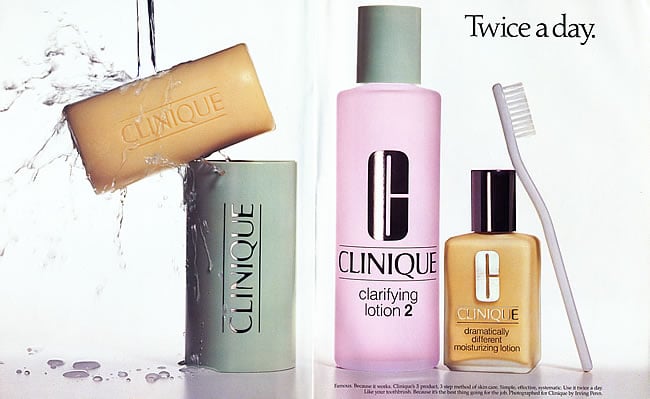The Medical Approach | Clinique
The Medical Approach | Clinique
Founded by Estée Lauder in 1968, Clinique was the company's answer to growing concerns women had about the chemicals and additives in beauty products. It was -- and still many of its products are -- fragrance free and hypoallergenic (though what these claims really mean are debatable). The genius marketing ploy though was about more than its product ingredients.
Makeup and beauty products could no longer make unfounded scientific claims. The industry was becoming more and more regulated. But there was nothing stopping the brand from alluding to science. Clinique employees, who wear white medical jackets, are known as consultants. Its product packaging uses a green color -- reminiscent of medical scrubs. And Irving Penn, a famous fashion photographer, created the brand's iconic visual style of advertising the cosmetic product, not fresh-faced models. The branded likened skin care to brushing your teeth, a position that made it the choice for women who care about the health of their skin, not how they cover it up with products and makeup.

The Color of the Season | Revlon
Charles Revson got his start in the industry by selling nail polish; he'd show up at salons with his fingers lacquered in 10 different colors. When he launched his own business -- Revlon Nail Enamel -- he created a new formula that used colorful pigments in a time when most polish was transparent.
Revson introduced seasonality into the beauty market. Similar to the fashion industry, he would choose new colors for fall and spring. He promoted the idea of collecting polishes and choosing a shade based on the woman's mood, outfit, and even the weather. He marketed cosmetic products with the idea that makeup and beauty products were accessories, not just a routine.
Comments
Post a Comment